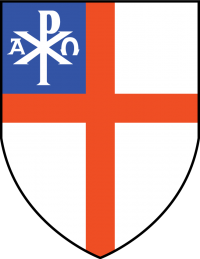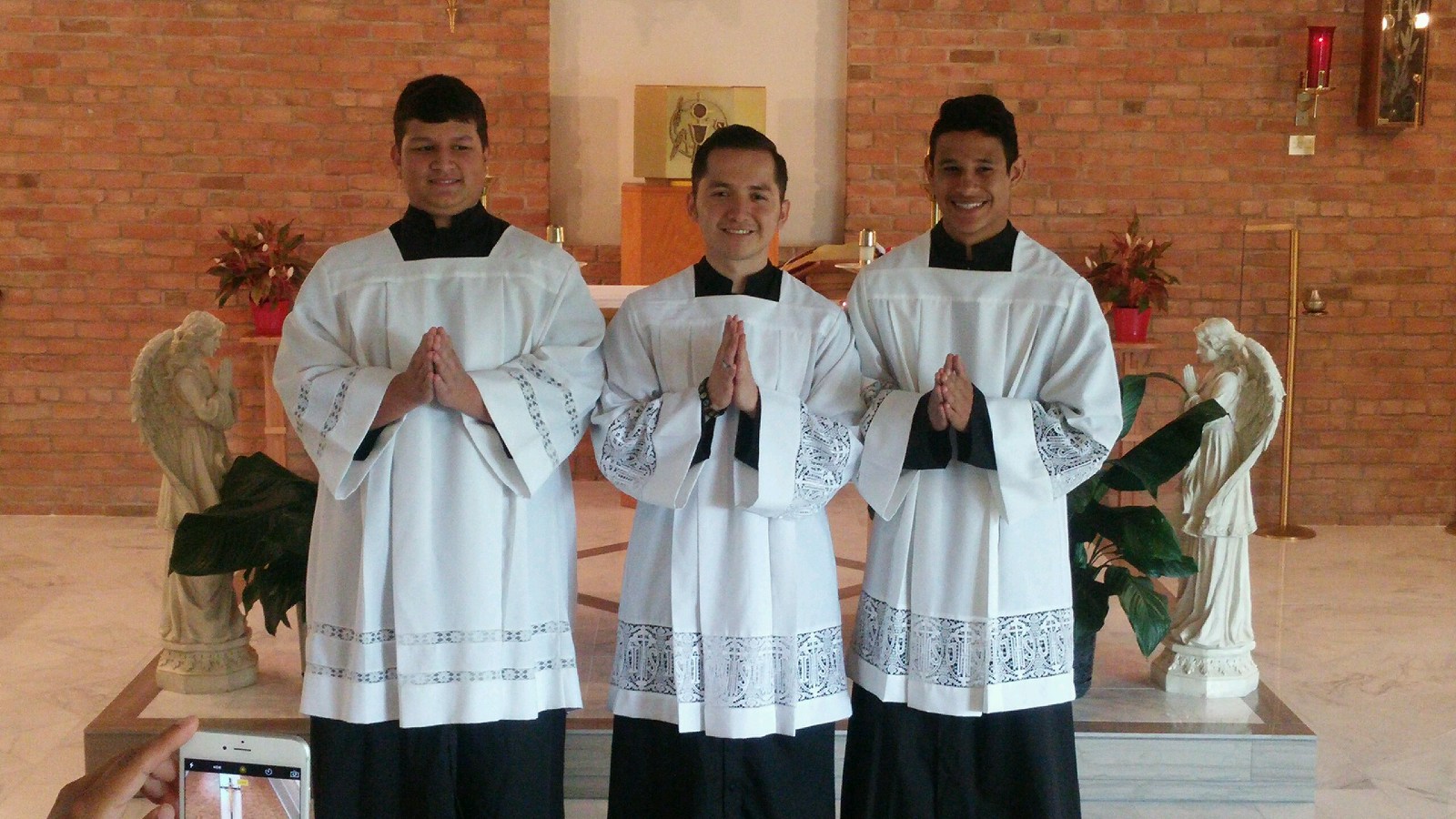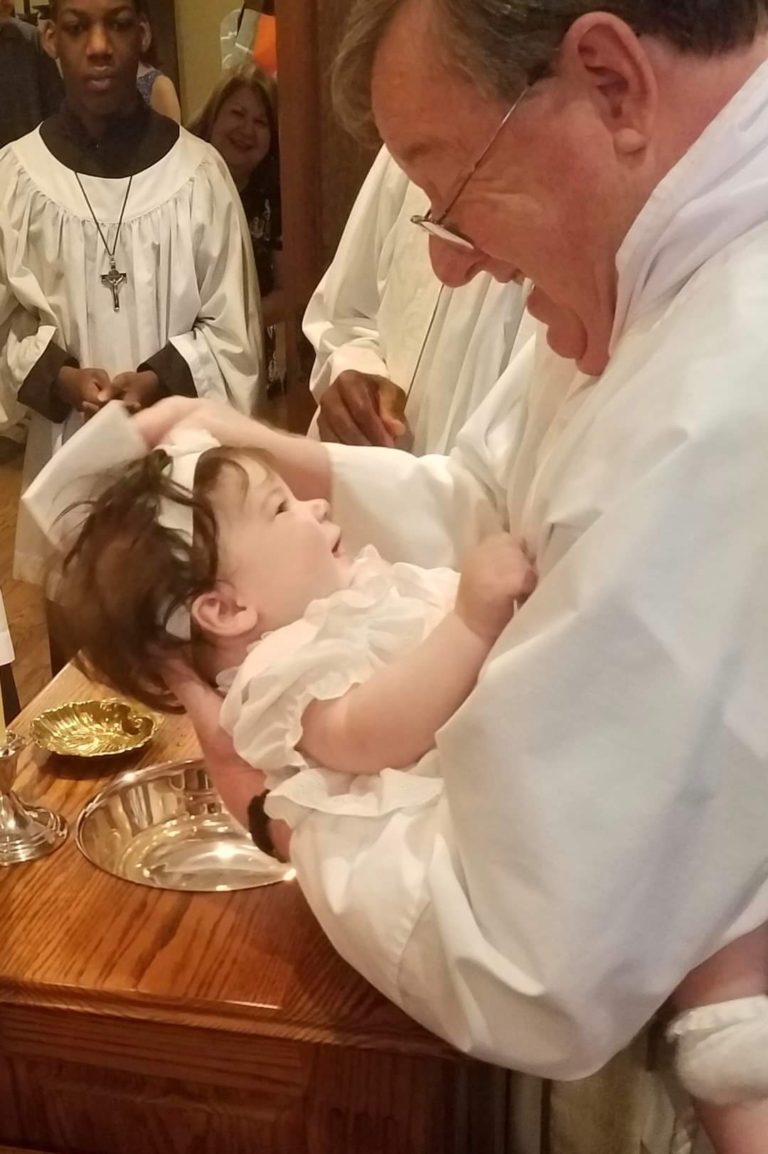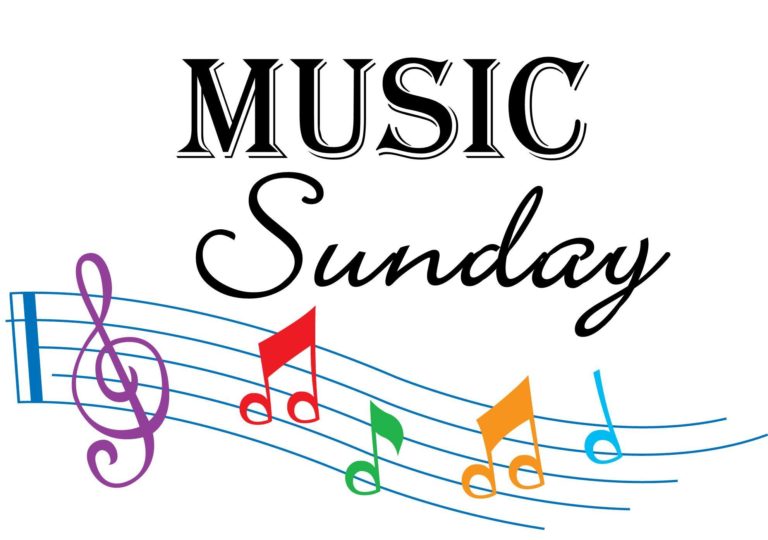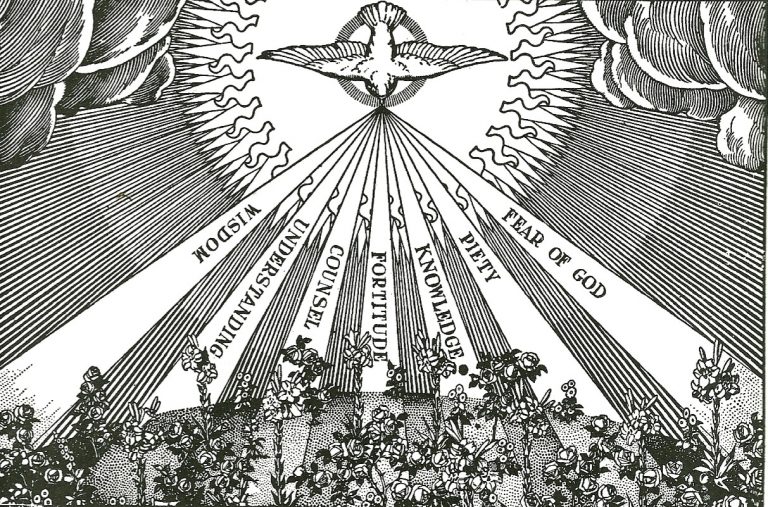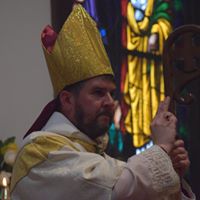Acolyte Eucharist Service Reference Manuel
St. Michael the Archangel Anglican Church
EUCHARISTIC SERVICE REFERENCE MANUEL
TABLE OF CONTENTS
Preparation for service: Page 1; Lighting and Extinguishing Candles: Page 2; Lining up for the Procession: Page 2; The Procession: Page 3;
Holy Eucharist:
Reading of Scripture Lesson: Page 3; Creed, Notices and Sermon Page 5; The Offertory Page 5; The Canon of the Mass: Page 6; The Communion: Page 7; The Ablutions: Page 7
The Recession: Page 8
Notes for the Thurifer: Diagrams and note pages follow…
Preparation for service:
Remember that as servers (acolytes) our conduct in the church, this includes the vestry room where we vest, must be of respect as we are in God’s House; therefore, we should always conduct ourselves with humility and respect for others. As we vest, we must always remember that there are usually people in the nave who are praying. We must respect their desire to privately pray in silence and we must always keep our conversations in a low voice (or even whisper). The last thing we want to do as servers of Lord is to interfere with someone’s private conversation with God in prayer (if one cannot pray to God in His house of prayer, then where?). Noise must be keep to a minimum – this is not a social hour for the Priests or other servers. We are servers of God and of His people.
Preparation for service begins at home. If old enough to serve as Acolytes, we should be observing the fasting rule. Our purpose of fasting is to teach us that we should first feed the soul before we feed the body…it sets a priority of God first. This means that we should not eat for AT LEAST 3 HOURS prior to Mass. If you must eat before church, do it at least three hours before receiving communion. In getting dressed for church wear dark trousers and shoes if possible, preferably black. An open collar shirt can be worn and suggested during summer months. When we are dressed in our black cassocks, nothing should show except the toes of our shoes and the skin of necks.
If serving, you should be in the sacristy (vestry room where we vest) at least 15 minutes before mass is to start (if lighting the candles as number 1 and 2 servers – you should arrive in vestry 20 minutes prior to mass.) This time is required for the celebrant of the mass to give any special instructions concerning the mass for that day. In getting dressed, our cassock must be button all the way down and should be long enough to just cover the instep of the shoes (top of shoes.) The sleeves should cover the wrist, and shirt sleeves should be rolled up to where they are not visible. All servers should check each other and make adjustments to the surplices or cotta’s so that they are centered and hang evenly.
The number 1 and 2 servers should dress in the cassock only and about 15 minutes prior to the mass they should light the candles (procedure listed later – see “lighting and extinguishing candles”.) Note: If the paschal candle is to be used it should be lighted 30 minutes before the mass. All Acolytes must have a crucifix worn on outside of vestments. After lighting the candles, the number 1 and 2 servers should put vest in their surplices.
(If incense is to be used for the mass, when the acolytes leave to light the candles, the Thurifer should prepare and light the charcoal. After the preparatory prayers, the celebrant will then put in the incense into the Thurifer and bless the incense.)
1
Once all are vested and prepared, the priest will lead the preparatory prayers.
Lighting and Extinguishing the candles:
Number 1 and 2 are to light the candles, as stated in the “preparation” section, dressed in their cassock only. Each should have a torch/sniffer and together proceed up the center aisle and directly to the North Transept where they light their torches from a votive candle, and proceed to the center of alter “in the box”. Both acknowledge the tabernacle together and proceed to the third step centered on altar. Moving together the candles are lighted from the inside out starting on each side of tabernacle (remember the light of God spreading out into the world.) Note: if this is to be a “low mass,” (no music – 8AM mass) only the two candles on the altar would be lighted and the six “high mass” (office candles) would remain unlit. After lighting the altar candles, the two floor candles would be lighted.
The only exception to this order of lighting candles is during Advent or Easter when the Advent candles or the Paschal Candle is used. When these are used, they are the first candles to be lighted (30 minutes before the mass) and the last to be extinguished after all the congregation has left the church.
After all candles have been lighted, the two acolytes retire to the vestry down the side aisles and finish vesting (dressing) for the mass.
The Altar candles are extinguished first from the outside in (remember the word of God returning to the tabernacle.) Finally the floor candles are extinguished.
Lining up for the Procession:
Unless you are carrying something (i.e. the Crucifer) your hands should be together with the fingers extended and the right thumb should be crossed over the left. Your hands should remain in that position, chest high, hands pointing up at a 45 degree angle. After taking places in the Sanctuary, the Crucifer and torchbearers should also put their hands in this position.
The order of the lineup for this Procession is:
The Thurifer is the first person (if used) otherwise the Crucifer leads the procession. If Thurifer is used, following behind him is the Crucifer. Following the Crucifer are the two Torch-bearers. The boat boy should be next in the procession following behind the Torch-bearers. The Boat –boy must insure that when he enters the Sanctuary, that he goes to the same side as the Thurifer (this should be determined before the procession begins.)
Page 2
The other acolytes line up behind those described above. The 1st and 2nd servers are next with the number 1 being on the right (Epistle side) and the number 2 being on the left (Gospel side.) If there are a number of odd servers, then the one will be in line by himself.
Following the Psalmist and Lay Reader would be all the clergy. The last person in the Procession is the Celebrant of the mass. This should be true even if the Bishop is present but not celebrating (however, this is not always the case) – it is up to the Bishop.
Proper spacing should prevail when lining up – extend your arm and it should touch the back of the person in front of you. As you process you should try to keep this distance.
The Procession:
The pace for the Procession is set by the Server who is leading the procession. It should be a medium pace, not as fast as a normal walk, but not dragging. Remember that many people show reverence to the Processional Cross so you do not want to run by them…give them time to be reverent in their worship. If the Procession is lead by the Thurifer, then he will enter directly into the Sanctuary. The Crucifer and the Torchbearers upon approaching the Sanctuary pause to acknowledge the Tabernacle and turn to the right and proceed to the south transept where they leave the Crucifix and torches.
While they are putting the crucifix and torches in the south transept, the rest of the people in the procession will enter the Sanctuary and line up in front of the altar. They may wait for the Crucifer and Torchbearers to come into the Sanctuary and line up too, or they can at the lead of the celebrant genuflect and go to their places. If they wait for the Crucifer and Torchbearers, then they all genuflect together. If not, the Crucifer and Torchbearers enter the Sanctuary after leaving the south transept and line up before the altar and genuflect and then assume the places on the bench on the Epistle Side. Sometimes, at the discretion of the Celebrant, they will sit in the front row of seats in the south transept. This is determined before the Procession begins.
Holy Eucharist:
All acolytes are kneeling as the Eucharist begins. The acolytes will remain kneeling until the celebrant has read the Collect (s) and has stepped to the Gospel side of the altar for the reading of the Epistle.
Reading of the Scripture Lessons
As the celebrant moves to the gospel side, the Psalmist and Lay Reader go the center of the Sanctuary (the acolytes sit), genuflects and go to the prayer benches (Prie-Dieu). After the Old Page 3
Testament lesson is read, then the Psalmist introduces the Psalm of the day and leads the congregation in its reading – its introduction is “The portion of the psalm appointed for today is psalm ??? found on page ??? of the Book of Common Prayer, we will read responsively full verse to full verse”
or it could be half verse to half verse. Normally the Goria Patri concludes the reading of the Psalm.
When the Lay Reader is prepared to read the Epistle, he introduces it as described in the first rubric on page 70 of the Book of Common Prayer:
“The Epistle is written in the ??? Chapter of The Epistle of (Blessed Paul the Apostle to the Romans) beginning at the ??? verse”
If the Epistle appointed for the day is taken from a book that is not one of the “Epistles.” When this is the case an acceptable wording is:
“The portion of Scripture appointed for the Epistle is written in the ??? Chapter of the Book of ??? (The Acts of the Apostles) beginning at the ??? verse”
When the appointed reading has been completed, the Lay Reader announces the conclusion of the Epistle again using the form described in the Book of Common Prayer (regardless of if it is an “Epistle” or a portion of Scripture appointed for the Epistle:
“Here endeth the Epistle”
As the Psalmist and Lay Reader enter back into the Sanctuary, the Number 2 Server meets them and moves the Missal from the Epistle Side to the Gospel Side and places at a 45 degree angle. If the Gospel is Processed, then the Number 2 will move the Missal from the Epistle side to the Gospel side as the Priest or Deacon goes out to the Nave to read the Gospel – once again the Missal is placed at a 45 degree angle on the Gospel Side and return to his seat (standing for the Gopel.)
If the Gospel is Processed: once the organist starts to play the Gradual Hymn, the Crucifer and Torch Bearers together go to the center of Sanctuary, genuflect and proceed to the south Transept to get the Crucifix and torches. If not sitting in the Sanctuary – go directly to the Crucifix and Torches. Then move to the center of the crossing and align themselves behind the Lay Reader, who with the Altar Service Book should be standing at the entrance to the Sanctuary. All are facing the altar.
The Priest (or Deacon) will turn and descend to the first step of the Sanctuary and turn toward
Page 4
the altar and genuflect and once he turns to leave the Sanctuary all the Acolytes in the procession will turn the same direction and proceed down the center aisle. Once the Crucifer reaches the forth row of pews he stops and turns towards the altar. The Torch Bearers stop and turn to face each other. The Lay Reader (holding the Altar Service Book) stands directly in front of the Crucifer and turns to face the Altar. He opens the Altar Service Book and holds it in his hands for the reading of the Gospel.
When the reading is finished, the Priest will kiss the Gospel (or it will be brought to him to kiss) and step to the side. The Gospel reader will stand to the side and the Lay Reader will to the other side and allow the Crucifer first and then the Torch Bearers to pass by (they move to put the Crucifix and Torches in their proper holders – and follow back to their seats – they must stop and genuflect if going into the Sanctuary.) The Lay Reader then proceeds down the aisle and the Priest (or Deacon) follow and enter into the Sanctuary. All others return to their appropriate places (always genuflecting when in the “box” if their hands are empty.)
CREED, NOTICES AND SERMON:
Following the reading of the Gospel, the recitation of the Nicene Creed is next (all remain standing) and following the Creed the Priest will ask for all to be seated for any announcements. The Sermon follows the announcements and the offertory is announced.
THE OFFERTORY:
After the announcement of the offertory, i.e. “remember the words of our Lord Jesus as he said it is more blessed to give than to receive”, the second server moves to secure the collection plates (usually two) and meets the number one server centered on the third step in front of Altar and after acknowledging (not genuflecting) the Tabernacle (on the Altar) they turn to face the Nave. Number two stands off on the Gospel side as the number one server receives the Oblations (on a tray) and takes them to the Epistle Side Credence Table, as the number one server turns to leave with the Oblations, the number two server moves to the center between the rails and distributes the collection plates and collects the “count sheet”. The number two moves to the second step and hands the celebrant the “count sheet” and then returns to the third step and genuflects before moving to the Gospel end of the Altar.
The number one removes the veil from over the Chalice, Cruets, Purificator and bread box. He acknowledges with the Celebrant the need for a second Chalice and if required he hands the “dressed Chalice” to the Celebrant. The number one then secures the “Bread Box” and proceeds to the Celebrant and removes the “Bread Box” lid, holding the lid beneath the “Bread box” and Celebrants hand, and offers the Hosts (bread) to the Celebrant who will remove the
Page 5
appropriate number. If a Host falls to the floor (missing the lid held under), the Celebrant may direct the server to pick up and eat the host (or the Celebrant may do it himself – wait for directions!) The number one will then return the “Bread Box” to the Credence Table.
Next the number one removes the stoppers (the lids) from the wine and water cruets and picks them up holding them securely in his hands (as instructed – holding around the side or on the bottom.) The wine Cruet should be in his right hand and water Cruet in the left. Both Cruets should have the handles pointing away from the server which will allow the Celebrant to take them by the handles. He takes both Cruets to the Celebrant at the Altar.
The first server allows the celebrant to take the wine from his right hand and only lets the cruet go when certain that the celebrant has it securely in his hand. While the celebrant is pouring wine into the Chalice the first server moves the water from his left hand to his right hand. When the celebrant is finished with the wine he will place it in the first server’s left hand and turn loose when the cruet has been secured by the first server.
The first server will elevate the water, which is now in the first servers right hand, and the celebrant will bless the water and then take it and while the celebrant is mixing a small amount of water with the wine, the first server switches the wine cruet from his left hand to his right hand. When the celebrant is finished with the water, he will place the water cruet in the first servers left hand. The first server then returns the cruets to the credence table. This time, he turns the handles toward himself (later he will pick up the cruets by their handles.)
If incense is used, the first server will remain standing at the credence table while the blessing of the altar with the incense is taking place. He does not move until after the Thurifer has blessed the acolytes on the epistle side. (For more notes on the procedures of incense see “notes for thurifers.)
The first server should remain standing at the credence table so that he can take the collection plates. When the offertory is finished and the ushers have completed the collection, the ushers will then bring forward, once the celebrant turns to receive, the offering of the people to the Sanctuary entrance. As the usher begin to move forward, the second server will pick up the receiving plate and move down to the third step centered in the Sanctuary (the box) and turn to face the Altar and acknowledges the tabernacle (do not genuflect since you have a plate in your hand) and turns to meet the ushers and collect the plates in the Receiving Plate (take the fullest plate first – on bottom – and then the less full plate) and then the second server turns and take the plates the Celebrant who receives the plates and turns to bless the offering. As the Celebrant turns to bless the offering and hands them off the first server who places the plates on the Credence Table, the second server descends back to the center of the Sanctuary,
Page 5
genuflects and moves over and stands in front of his kneeler.
The number one server now drapes the Lavabo Towel over his left wrist with the cross monogram facing out, picks up the Lavabo Bowl in his left hand and the water Cruet in his right hand holding the Cruet by its handle. The first server moves to the front of the Altar to administer the water over the Celebrants fingers into the Lavabo Bowl. The Celebrant will then remove the Lavabo Towel and dry his hands. Once finished, the Celebrant will drape towel back over the server’s wrist. Celebrant and server bow to each other, and the first server returns to Credence table to deposit the items used. Once duties are finished, the first server proceeds to his kneeler and kneels.
The celebrant will turn to the congregation and announce the intentions of the mass. When he announces “Let us pray for the whole state of Christ’s Church”, the first and second server move to the center of the sanctuary, genuflect and put the kneeling cushion in place first and then insert the communion rail properly, and then they genuflect in the box and return to their respective kneelers.
THE CONNON OF THE MASS:
Whenever the sacramental elements are elevated the server’s sign themselves with the sign of the cross while saying the words of adoration of St. Thomas when he said “My Lord and My God.”
The ringing of the sanctus bells takes place at three places during the mass. The first is at the Santus…when the celebrant says “Therefore with angels and archangels” the first server should carefully raise the bells so that they do not ring and when the words “Holy, Holy, Holy” are said or sung, the server gives one sharp ring of the bells at each “H” sound. After the third ring, once the bells completely stops ringing, the bells should be carefully lowered, once again not allowing them to ring.
The next time the bells are rung is at the consecration of the elements of bread and wine. When the celebrant finishes saying the words “Until His Coming Again” the first server should give the bells one sharp ring. Following the consecration of the host, the celebrant will genuflect, elevate, and genuflect. Ringing of bells, one sharp ring when (1) the knee touches the floor, (2) at the peak of the elevation, and the knee touching the floor again (3) on the second genuflection.
The same procedure is followed for consecration of the wine.
Page 6
THE COMMUNION:
Following the consecration of the bread and wine, there will several prayers including the Lord’s Prayer, The Prayer of Humble Access, and then the Agnus Dei (O Lamb of God that takest away the sins of the world, etc.) When these prayers are finished, the celebrant will first receive communion and the will turn with chalice and host and proclaim “Behold the Lamb of God, Behold Him That Takest Away The Sins Of The World.” When this presentation is made (the elevation) all should sign themselves as before (as they proclaim silently “My Lord and My God.” After ALL acolytes have received their communion they should move, all together at same time, to their seats in the Sanctuary until all of the congregation has received.
The Ablutions
When the Celebrant and Chalice Bearer return to the Altar after giving of the Eucharist, the First Server should move to the Credence Table and pick up the wine and water Cruets by their handles. After the ordinated minister consumes the remaining wine he will simply hole the empty Chalice towards the First Server who then pours a “mouthful” of wine into the Chalice – enough wine should be poured to allow the ordained minister to completely rinse the Chalice and drink all that wine. After the rinsing of Chalice he will wrap Purificator over fingers and then place them centered in the Chalice and turn to First Server to have his fingers ablated (cleansed.) The First Server should pour a small amount (a drop is sufficient) over the Ordained Ministers fingertips followed by a generous amount of water. When this is completed the First Server returns the Cruets to the Credance Table (if a second Chalice is used, the First Server will then receive the second Chalice and cover all with Credence Veil.) Once completed, the First Server returns to his kneeler and joins in the service.
While the First Server is busy with the Ablutions, the Second Server – either alone or with assistance of another Acolyte – should take down the communion rail…In doing this he first goes to center of box and genuflects and He then moves the kneeler from the center of Altar Rail and places it on the Gospel side of inside of Altar. Next, the center Altar Rail is moved to rest on top of the rail on the Gospel side. He turns, genuflects and returns to his place at his kneeler. He then watches the Celebrant and when he reaches for the Burse, the Second Server moves directly (no genuflect) to the Altar and possesses the Missal and Stand. He moves down the steps to the center, shows reverence to the Altar, and approaches the Epistle side of Altar and places the Missal and Stand at the end of the Altar squared (not angled) along the front edge. He then moves back to his position (genuflecting when he goes through the box.
Following this is the prayer of Thanksgiving, The Gloria (most Sundays), the dismissal and blessing.
Page 7
The Recession:
When the music for the recessional hymn begins, the Crucifer and Torchbearers go to the center of Sanctuary and genuflect before proceeding to the south Transept and get the Crucifix and Torches and move to the center of the crossing facing the Altar (Crucifer in center.) When the Celebrant genuflects, all servers in Sanctuary genuflect with him, and the Recession begins.
The servers all turn inward (towards center) and the Crucifer turns with the priest and begins the Recession out of the Nave.
Note: If there is a Thurifer, he will lead the Recessional out – followed by Crucifers and Torchbearers.
